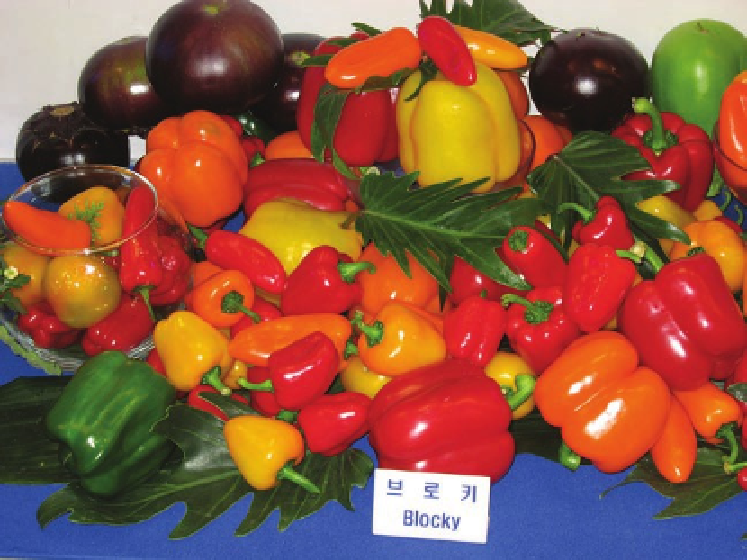Agriculture Reference
In-Depth Information
Photo 15.4.
The essential criteria to evaluate the sensorial quality of horticultural products are the
colour, flavour, aroma and texture.
are detected by the nose; both perceptions
are integrated in the brain, being difficult to
distinguish between them (Baldwin, 2003).
The genetic characteristics are the main
determinants of flavour and aroma of fresh
horticultural products, although they are
influenced, but to a lesser degree, by cul-
tural practices and the pre-harvest condi-
tions, as well as by the ripening stage at
harvest and any subsequent handling.
The organoleptic quality of non-
climacteric fruits generally decreases after
harvest, whereas climacteric fruits may
reach their best quality after being har-
vested, if they are harvested after the begin-
ning of the ripening process.
The sensorial evaluation of flavour and
aroma of a product is usually done by taster
panels. Consumer preferences vary depend-
ing on socio-economic, ethnic and geo-
graphical conditions.
The sugars that supply the sweet fla-
vour are fructose (the sweetest), sucrose and
glucose (the least sweet). Organic acids,
such as citric acid in tomato, provide the
acid taste.
In the majority of melon cultivars the
main sugar is sucrose and the most common
acids are citric and malic acids, whereas in
watermelon sucrose predominates and, in
some cultivars, there are high levels of fruc-
tose, and malic acid is the only relevant
acid (Baldwin, 2003).
In tomato, the total content of soluble
solids and the acidity determine its taste.
The most abundant sugars are glucose and
fructose, at approximately equal levels, with
citric acid being present in greater quanti-
ties than malic acid. There is also the pres-
ence of a large number of volatile compounds
(more than 400) from which 16 contribute
more effectively to the taste and aroma
(Baldwin, 2003).
The texture is a qualitative attribute
that is critical for the acceptance of fruits
and vegetables, that is, for the perception
that the consumer has of the qualitative
characteristics. The texture involves the
structural and mechanical properties of
an edible product and its sensorial
perception in the hand or in the mouth
(Abbot and Harker, 2003). The texture is

